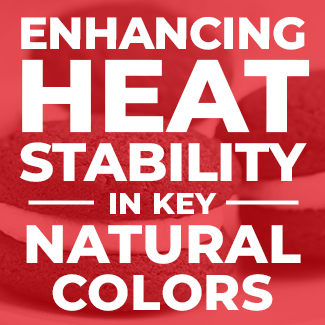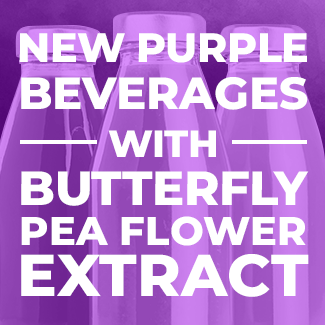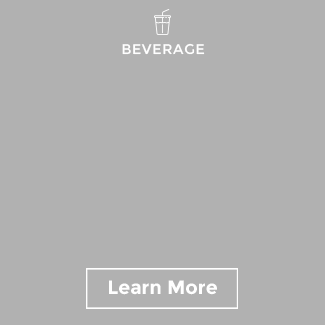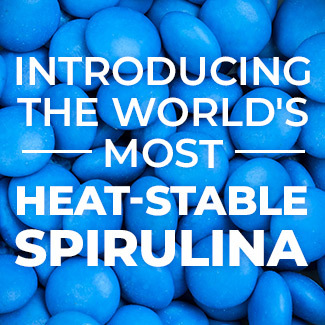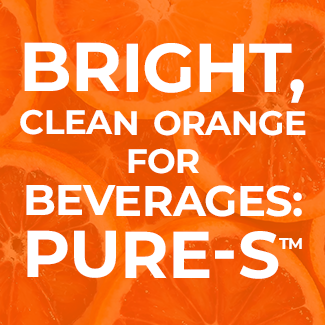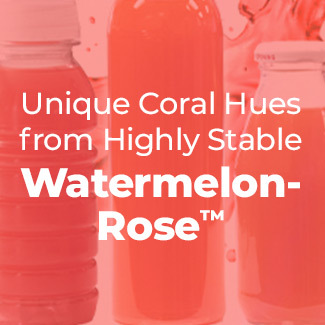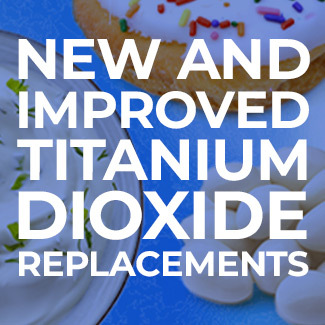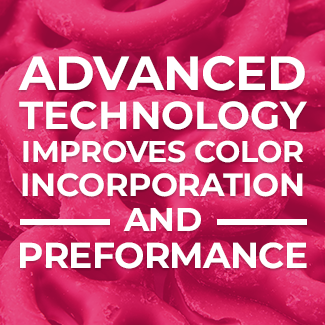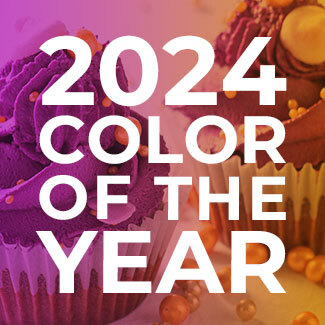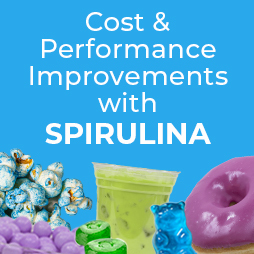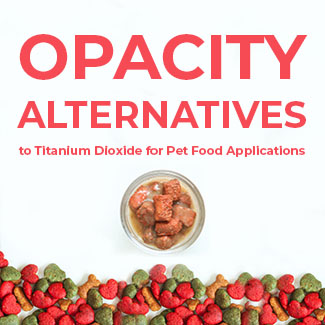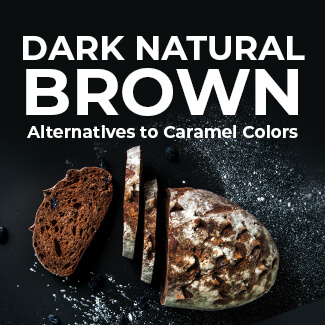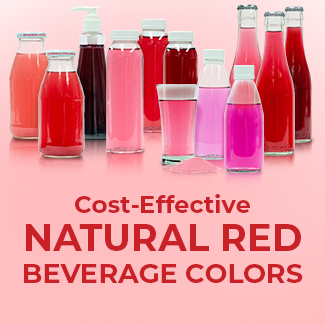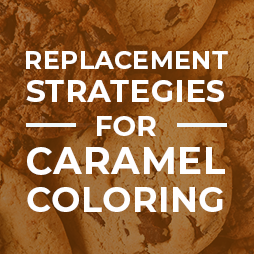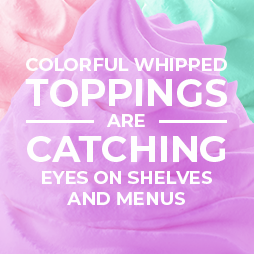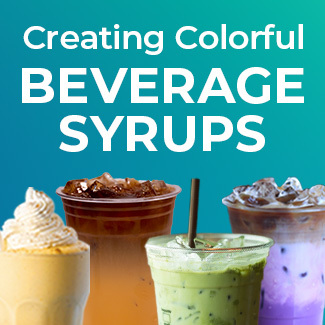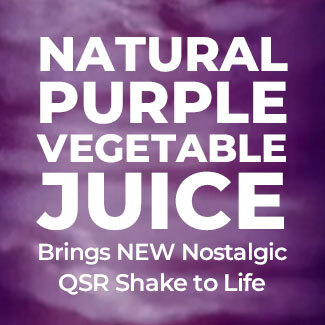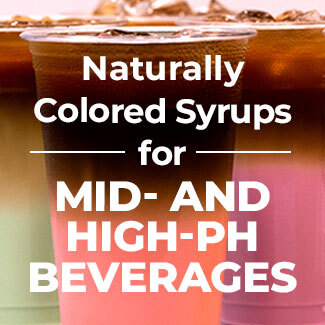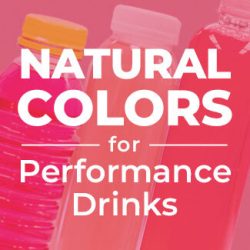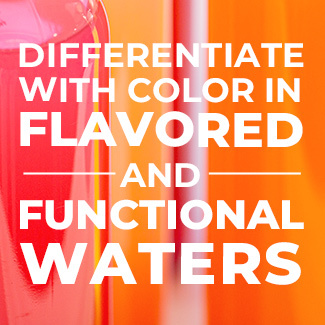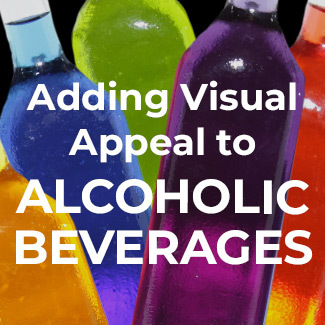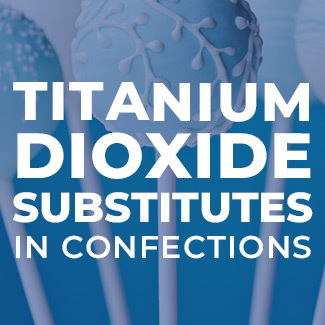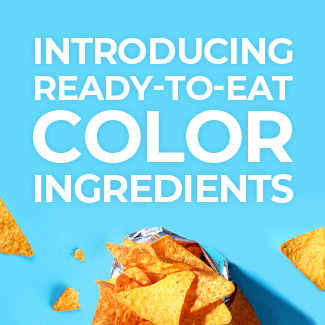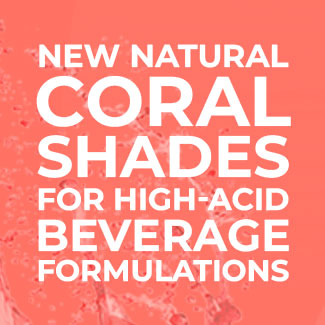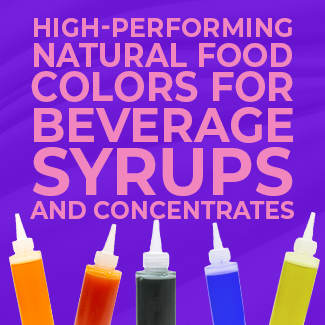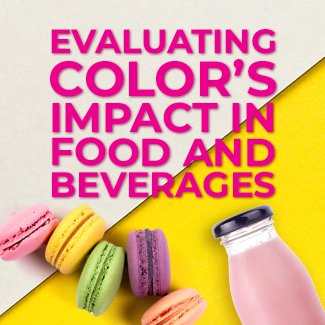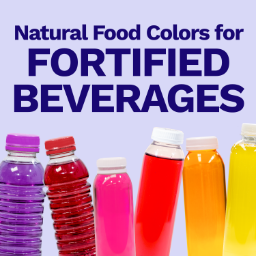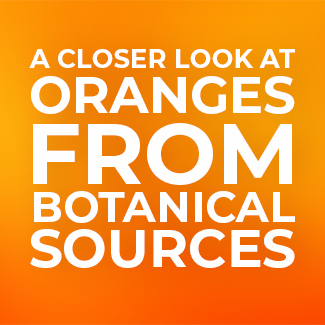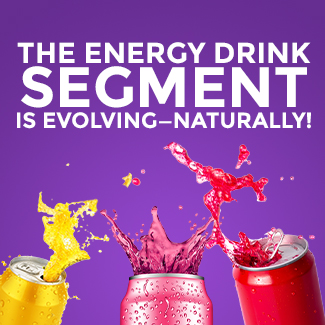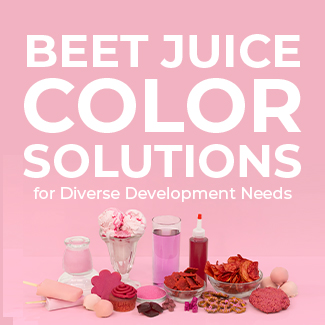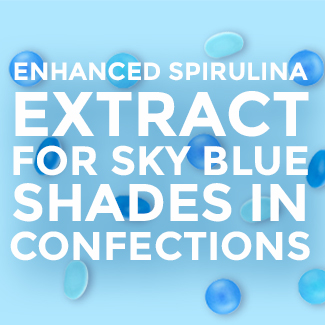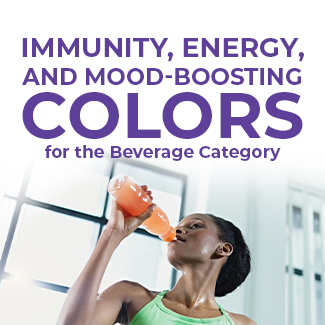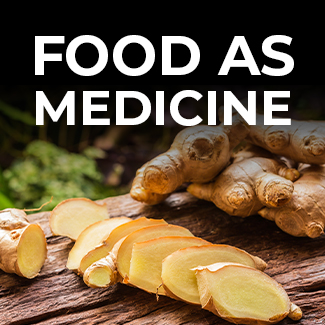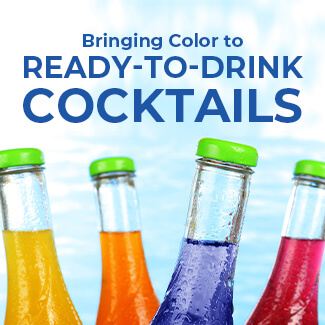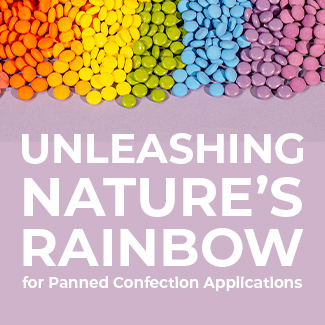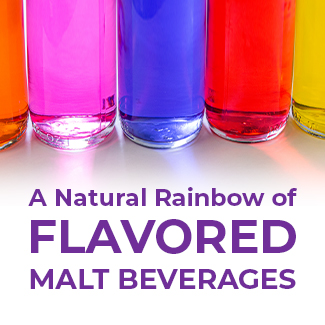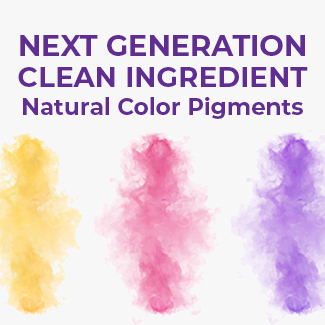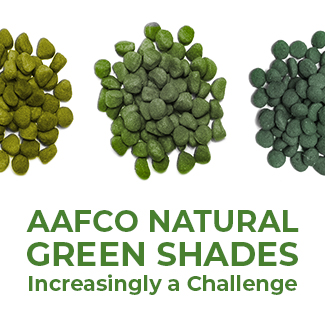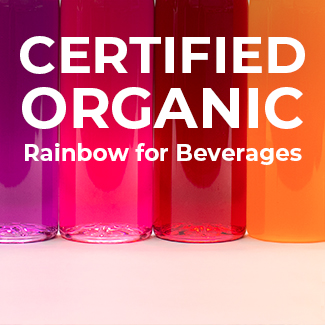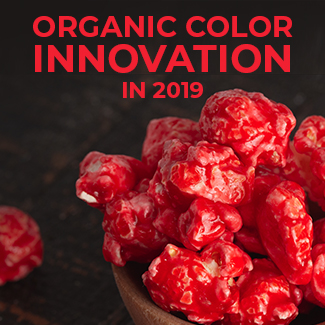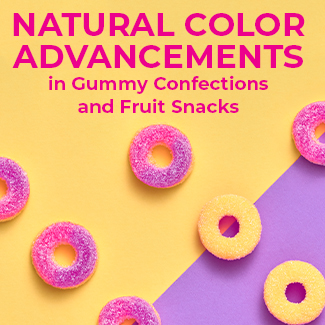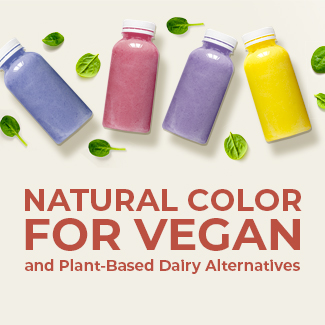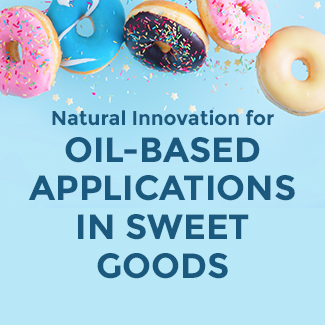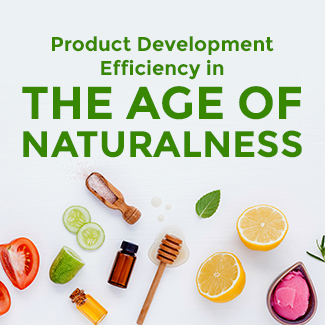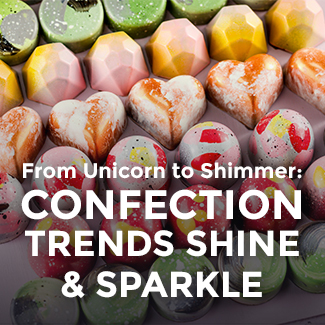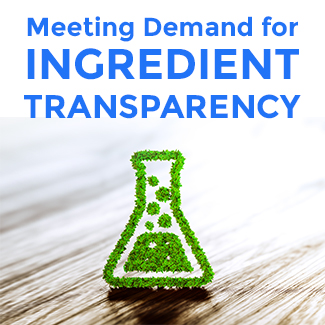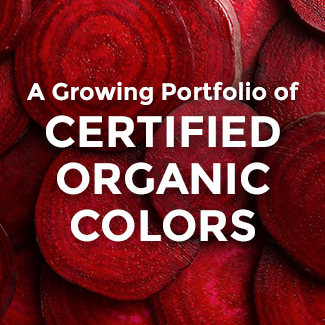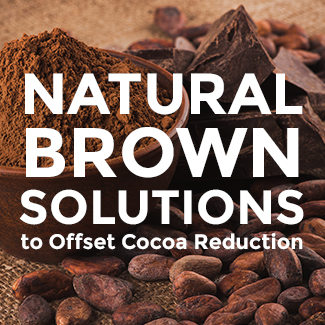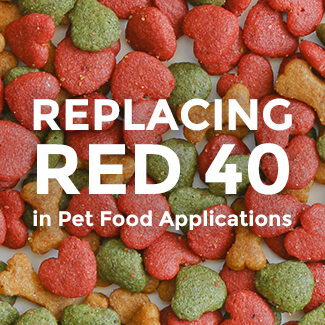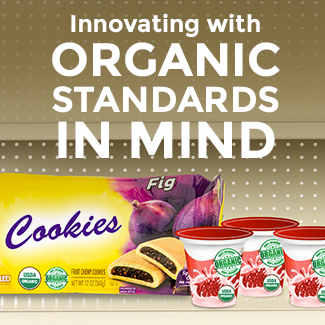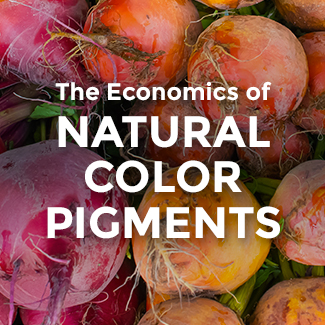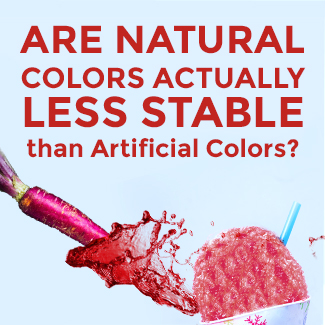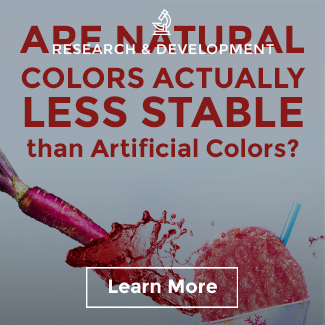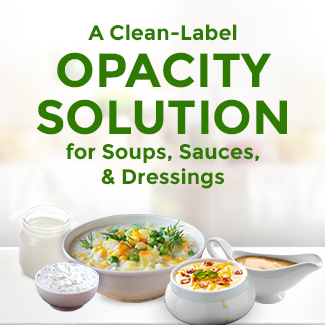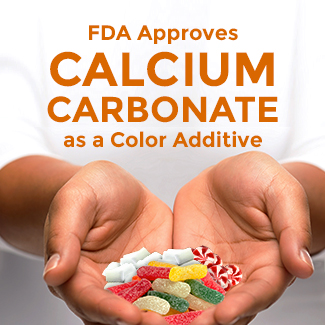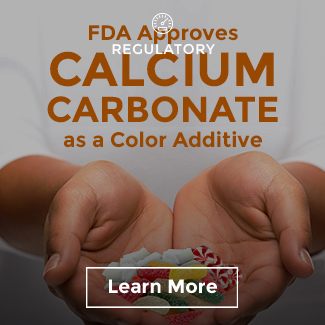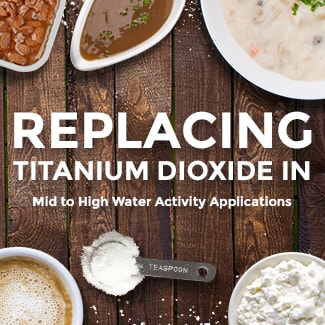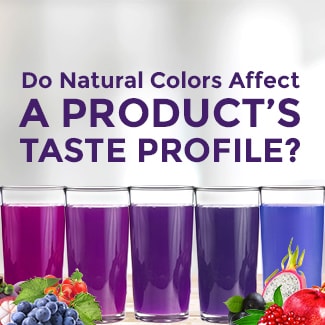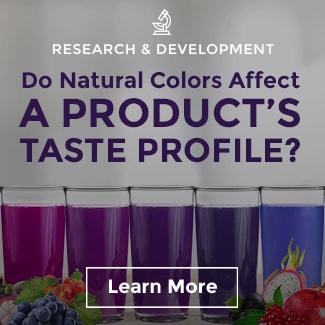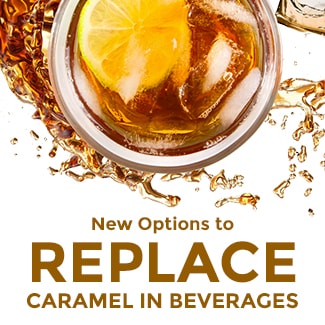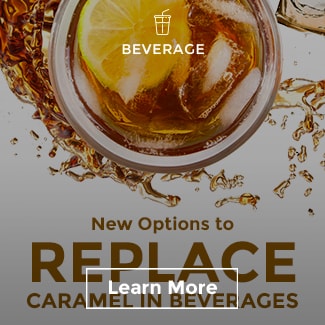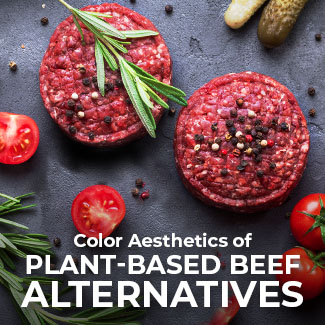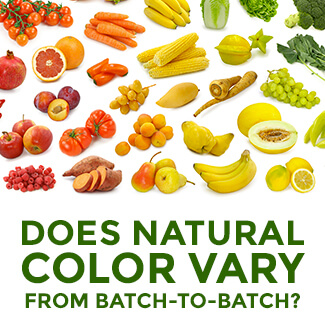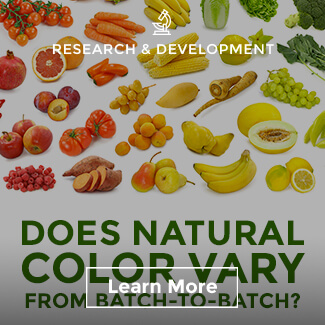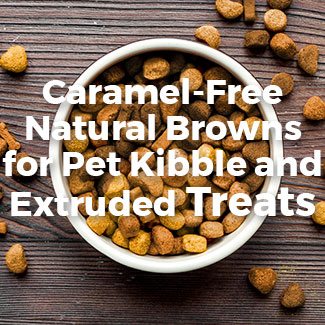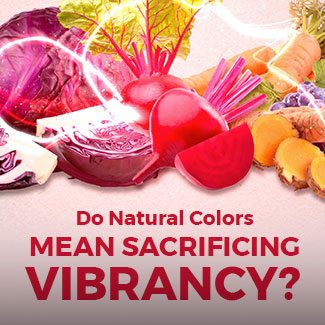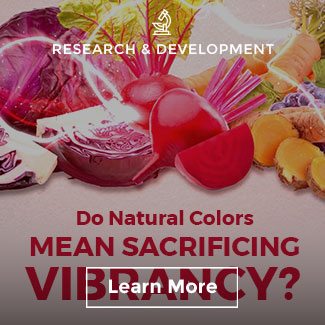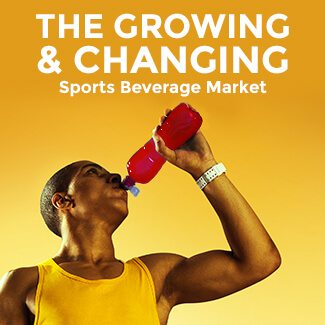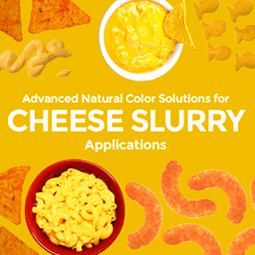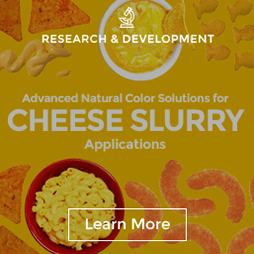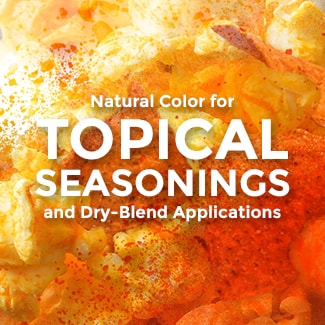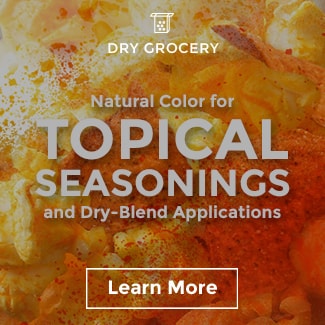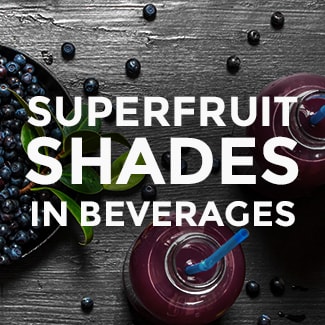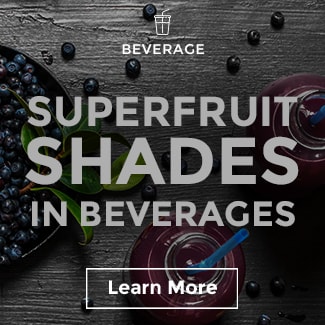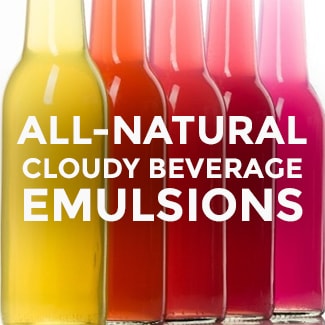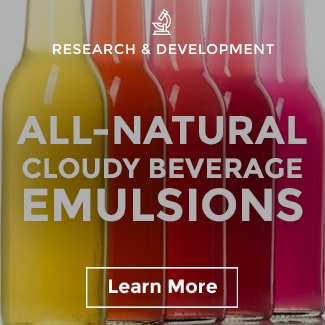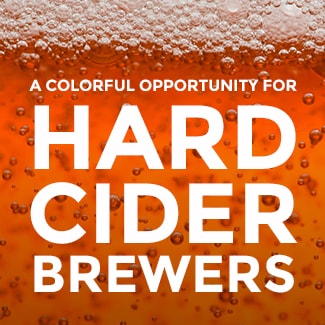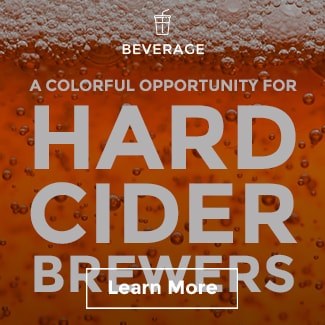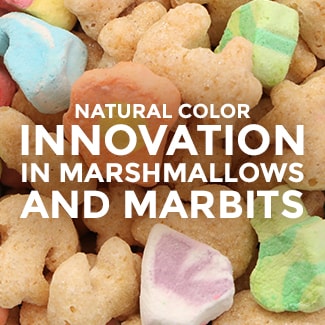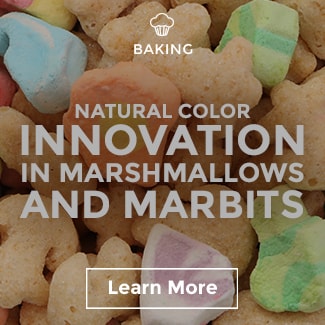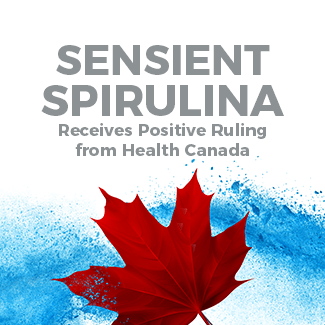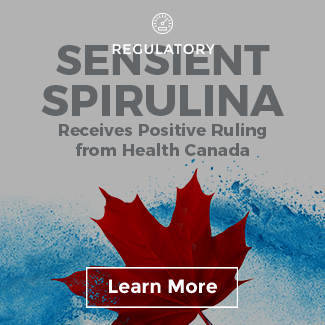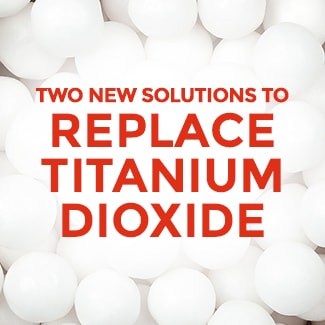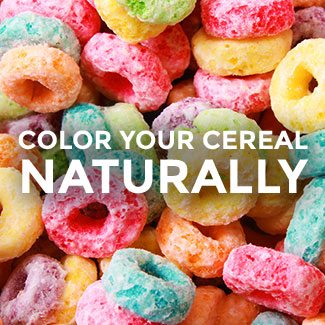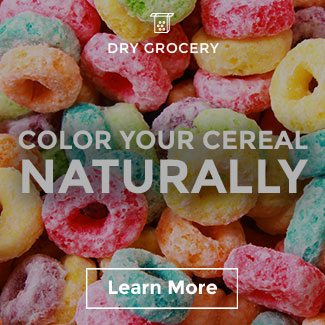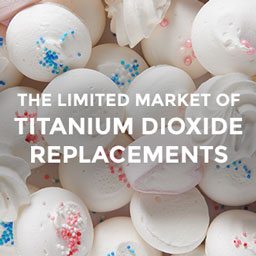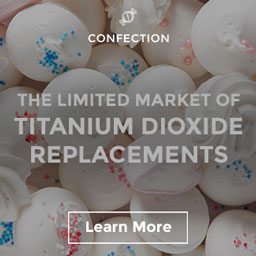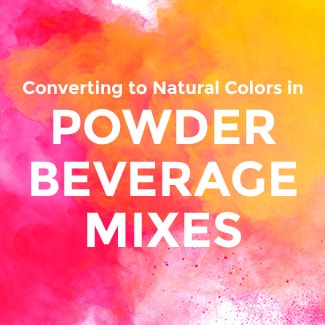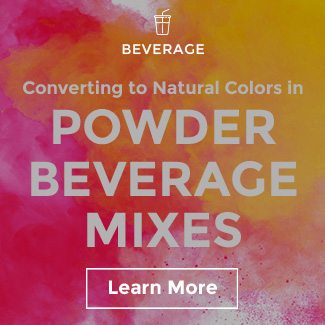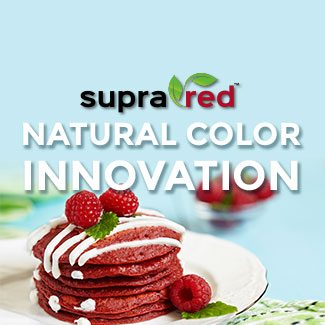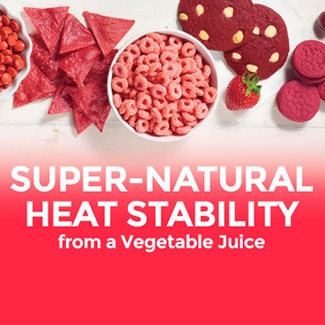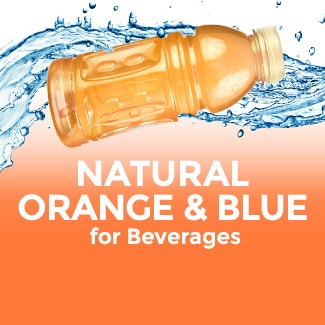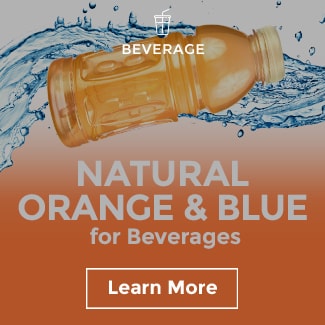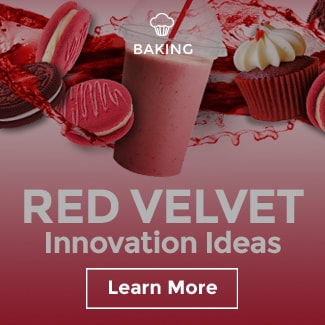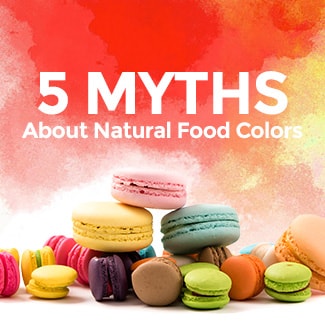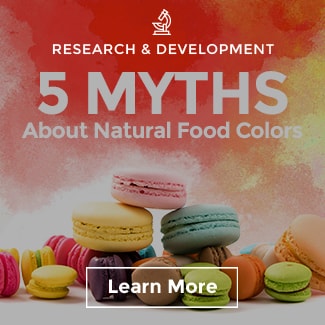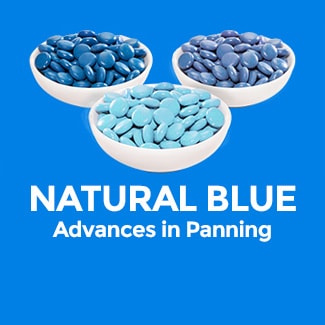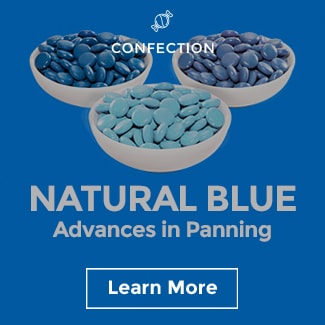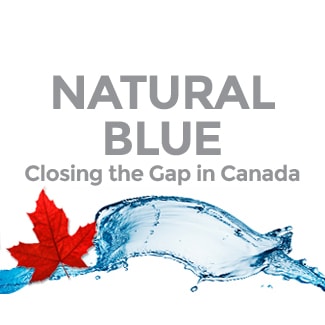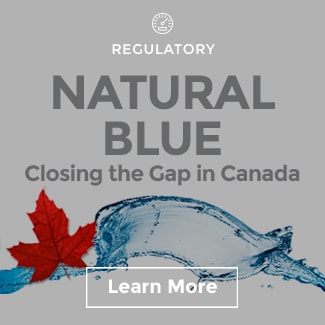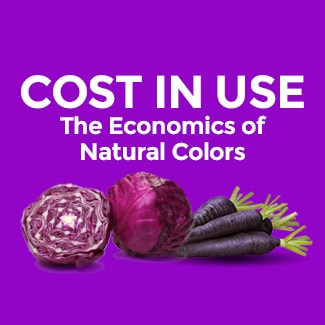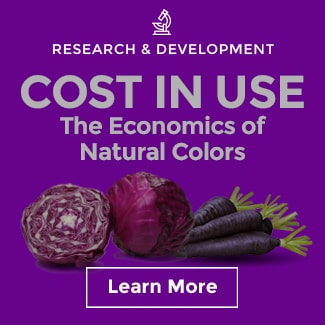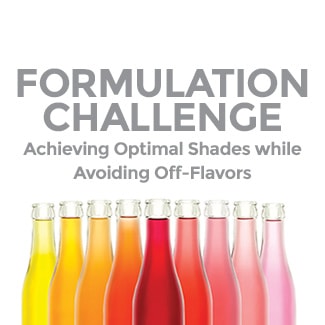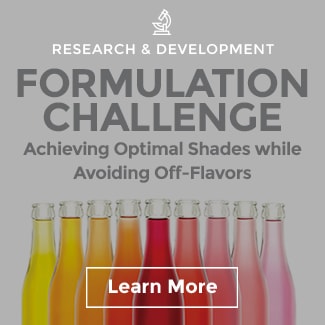Emulsion Stability in RTD Sparkling Beverages

The Value of Color in Beverages
While the word “taste” refers to what is detected by our taste buds, consumers’ perception of taste goes much further than that. Tasting a beverage is a multi-sensory experience constructed from a number of things including our palate, along with the beverage’s visual appearance, aroma, and mouthfeel. Our brains use all of our senses to interpret the beverage and arrive at the decision of our overall liking.
In beverages, color plays a prominent role in establishing a consumer’s flavor expectation prior to tasting. The color must match the consumers’ frame of reference for its respective flavor. For example, one would probably expect a sparkling blueberry beverage to be close to an indigo or purplish hue or a clementine juice drink to be a bold orange. Understanding consumer perspective is very important, especially since more than any other attribute, taste expectation (which can be impacted by color) drives consumer liking. Our research indicates brighter colors are preferred in beverages because of their association to a better and sweeter taste.

The Complexities and Necessities of Beverage Emulsions
With the growing popularity of sparkling beverages, we are seeing a wave of interest in natural color emulsions. Any colors from the carotenoid family like beta-carotenes, paprika, or turmeric require emulsification to function in water-based systems like a sparkling beverage base. Inherently, carotenoids prefer oil over water, but emulsions enable them to become water-dispersible. Sensient’s Advanced Emulsion Technology (AET™) and equipment innovatively decreases the particle size of the oil-soluble colors and transforms them into a stable water-dispersible solution.

Although complex, emulsions breathe life into many popular beverage flavors, and given the correlation of color and taste on purchase intent, developers shouldn’t sacrifice on color performance when working with them. They enable developers to achieve natural color shades that were previously unattainable, but formulating with emulsions can be tricky.
One of the biggest challenges for beverage developers is maintaining the emulsion’s stability. The results of a broken emulsion can be pretty undesirable including color agglomeration, cap staining, and/or color ringing.

Since many of the ingredients in a beverage system could potentially be emulsions or contain emulsifiers with the exception of water and most sweeteners, there is a high possibility for ingredient interaction. Let’s take a look at four common oversights when developing with emulsions, as well as strategies to enhance equilibrium.

OVERSIGHT: ADDING INGREDIENTS AFTER THE COLOR EMULSION
What can happen?
Multiple emulsions in a beverage system increases the chance for undesirable reactions or incompatibility between ingredients, potentially resulting in a coalescence.
Color Advice:
One way to mitigate this risk is through order of addition, by adding the color emulsion last, which can reduce the potential for unintended interactions.
OVERSIGHT: DEVELOPING WITH INCOMPATIBLE FORTIFIED INGREDIENTS
Example: Like colors sourced from carotenoids, ingredients used for fortification, such as vitamins, are innately oil-soluble and require emulsification of their oil particle in order to be fully incorporated into a water-based system, like a sparkling beverage.
What can happen?
Sometimes the emulsifier used to make a vitamin for fortification is not compatible with another emulsion in the beverage system, such as the flavor or color. If incompatibility is the case, all of the systems’ emulsions are highly susceptible to breaking. As one emulsion breaks, it creates a ripple effect of interactions and disruptions with the potential of coalescing.
Color Advice:
While trial and error testing is one way of working through incompatibility issues, the most efficient way would be teaming up with an experienced color partner with knowledge in ingredient compatibility. Sensient’s longstanding history as both a color and flavor supplier has provided us with a vast collection of ingredient compatibility data at our fingertips. Our beverage color team uses this evolving data in their research projects to continously optimize formulations.

Color ringing and staining as
a result of broken emulsions.

OVERSIGHT: FORMULATING FLAVOR, CLOUD AND COLOR SEPARATELY
Example:
Developing a mango flavor emulsion independently from the golden beta-carotene color emulsion
 Beta-Carotene Color Emulsion
Beta-Carotene Color Emulsion
 Cloud Emulsion
Cloud Emulsion
 Mango Flavor Emulsion
Mango Flavor Emulsion
What can happen?
The emulsifiers in the flavor emulsion may not be compatible with those used in the color emulsion, resulting in adverse interactions and results.
Color Advice:
Partner with a supplier who is able to manage systems together (color, flavor, and cloud).
At Sensient Colors, we leverage the expertise of our sister company, Sensient Flavors, as well as our collaborations with other flavor houses to create integrated solutions such as:
- 1. Combining color and flavor emulsions into one compatible system
- 2. Ensuring the separate emulsions are compatible by formulating with the flavor house and the beverage manufacturer
- 3. Using one of our opacifying solutions like Avalanche™ Nebula or white AET™ to offer a combined solution of color and cloud in a range of shades

If you are experiencing any of these challenges, Sensient’s beverage application team is always happy to help. We enjoy working on the bench with flavor suppliers and batching during scale up with beverage manufacturers.
Get started today by requesting your color emulsion shade here.



